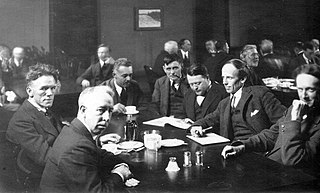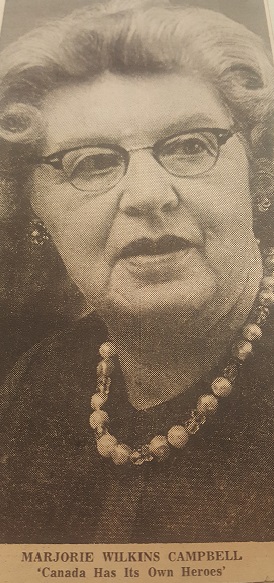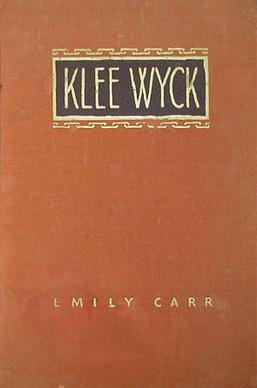
The Group of Seven, once known as the Algonquin School, was a group of Canadian landscape painters from 1920 to 1933, originally consisting of Franklin Carmichael (1890–1945), Lawren Harris (1885–1970), A. Y. Jackson (1882–1974), Frank Johnston (1888–1949), Arthur Lismer (1885–1969), J. E. H. MacDonald (1873–1932), and Frederick Varley (1881–1969). A. J. Casson (1898–1992) was invited to join in 1926, Edwin Holgate (1892–1977) became a member in 1930, and Lionel LeMoine FitzGerald (1890–1956) joined in 1932.

Emily Carr was a Canadian artist and writer who was inspired by the Indigenous peoples of the Pacific Northwest Coast. One of the painters in Canada to adopt a Modernist and Post-Impressionist style, Carr did not receive widespread recognition for her work, The Indian Church is now her best known, until she changed her subject matter from Aboriginal themes to landscapes — forest scenes in particular, evoking primeval grandeur. As a writer Carr was one of the earliest chroniclers of life in British Columbia. The Canadian Encyclopedia describes her as a Canadian icon.
Marian Ruth Engel was a Canadian novelist and a founding member of the Writers' Union of Canada. Her most famous and controversial novel was Bear (1976), a tale of erotic love between an archivist and a bear.
Alden Albert Nowlan was a Canadian poet, novelist, and playwright.

Alexander Young Jackson LL. D. was a Canadian painter and a founding member of the Group of Seven. Jackson made a significant contribution to the development of art in Canada, and was instrumental in bringing together the artists of Montreal and Toronto. He helped found the Group of Seven in 1920. In addition to his work with the Group of Seven, his long career included serving as a war artist during World War I (1917–19) and teaching at the Banff School of Fine Arts, from 1943 to 1949. In his later years he was artist-in-residence at the McMichael Canadian Art Collection in Kleinburg, Ontario.

Lawren Stewart Harris LL. D. was a Canadian painter, best known as a leading member of the Group of Seven. He played a key role as a catalyst in Canadian art and as a visionary in Canadian landscape art.

Franklin Carmichael was a Canadian artist and member of the Group of Seven. Though he was primarily famous for his use of watercolours, he also used oil paints, charcoal and other media to capture the Ontario landscapes. Besides his work as a painter, he worked as a designer and illustrator, creating promotional brochures, advertisements in newspapers and magazines, and designing books. Near the end of his life, Carmichael taught in the Graphic Design and Commercial Art Department at the Ontario College of Art.
Anthony Patrick Cawthra Adamson, was a Canadian architect, author, teacher, and municipal politician. He was a descendant of Joseph Cawthra through his mother.

John Robert Colombo, CM is a Canadian author, editor, and poet. He has published over 200 titles, including major anthologies and reference works.
Elizabeth Winifred Brewster, was a Canadian poet, author, and academic.
Gage Educational Publishing Company, otherwise known as Gage Learning, is a division of Nelson Education (nelson.com), a major Canadian publisher of school textbooks and educational reference books.

Walter John Learning was a Canadian theatre director, actor, and founder of Theatre New Brunswick.

William Morley Kilbourn, CM, FRSC (1926–1995) was a Canadian author and historian in Toronto, Ontario. Kilbourn's topics cover history, biography, religion and the arts, with a focus on Toronto; he penned over a dozen books. He was married to the Rev. Elizabeth Kilbourn.
Margaret Rose Conrad is a Canadian historian specializing in the fields of Atlantic Canada and Women's history. She held the Canada Research Chair in Atlantic Canada Studies at the University of New Brunswick before retiring in 2009.

Roy MacSkimming is a Canadian novelist, non-fiction writer and cultural policy consultant.

The Porcupine's Quill is an independent publishing company in Erin, Ontario, Canada. The Porcupine's Quill publishes contemporary Canadian literature, including poetry, fiction, art and literary criticism. It is owned and operated by Tim and Elke Inkster.
William J. Wood was a Canadian painter, etcher
This is a bibliography of notable works on New Brunswick, Canada.

Marjorie Elliott Wilkins Campbell was a Canadian writer of history and historical fiction. She won two Governor General's Literary Awards for the best works of the year, one of the two 1950 non-fiction awards for The Saskatchewan and the Governor General's Award for Juvenile Fiction in 1954 for The Nor'Westers.

Klee Wyck (1941) is a memoir by Canadian artist Emily Carr. Through short sketches, the artist tells of her experiences among First Nations people and cultures on British Columbia's west coast. The book won the 1941 Governor General's Award and occupies an important place in Canadian literature.











